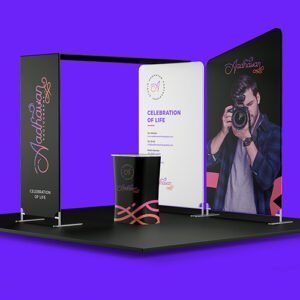In today’s fast-moving creative world, graphic design is no longer just about making things look beautiful — it’s about solving business problems visually and creating impact that drives sales. With brands investing heavily in visual storytelling across digital and print platforms, skilled designers are in high demand. If you’re considering a career change, want to earn more as a freelancer, or aim to climb the ladder in a creative agency, a graphic design course can be a game-changer for your earning potential.
1. From Hobbyist to Professional Designer
Many people start exploring design as a hobby — experimenting with Canva, Photoshop, or social media posts. While self-learning can give you a foundation, it often leaves gaps in technical skill, design theory, and industry-ready practices.
A structured graphic design course takes you beyond basic tools. You learn how to combine color theory, typography, composition, branding, and user experience to create professional-level work. Once you have a strong portfolio of real-world projects, you can confidently charge higher rates or qualify for better-paying design jobs.
2. Mastering Industry-Standard Tools
Most well-paying design jobs expect proficiency in professional software like Adobe Photoshop, Illustrator, InDesign, Figma, and After Effects. A good graphic design course teaches these tools hands-on, not just through theory.
Knowing shortcuts, advanced effects, and efficient workflows can save you hours — and in freelancing or agency work, time saved equals more earnings. Clients and employers will also pay more for designers who can handle complex tasks quickly and accurately.
3. Building a Strong, High-Value Portfolio
A portfolio isn’t just a collection of pretty images. It’s your ticket to high-paying opportunities. Many beginners struggle because they only show practice work or random social media posts.
During a well-structured course, you’ll work on real-world projects such as:
Brand identity design (logos, brand guidelines)
Brochure and packaging design
Social media campaigns
Website and UI mockups
Advertising creatives
These projects show potential clients or employers that you can solve real business problems visually. A strong, diverse portfolio allows you to confidently charge premium rates or negotiate better salaries.
4. Learning the Business Side of Design
Creative talent alone doesn’t guarantee high income. To earn well, designers need to understand client communication, pricing, project management, and marketing themselves. Many graphic design courses — especially agency-based ones — include industry insights and business skills to help you succeed.
You’ll learn how to:
Present your ideas confidently to clients
Price your work based on value (not just hours spent)
Create proposals and invoices professionally
Handle feedback and revisions effectively
Market yourself through social media and networking
These skills can turn a good designer into a profitable designer.
5. Opening Multiple Income Streams
One of the biggest earning advantages of graphic design is its flexibility. After completing a solid course, you’re not limited to one path. You can choose from:
Full-time jobs in agencies, studios, or in-house creative teams
Freelancing for startups, small businesses, and global clients on platforms like Upwork & Fiverr
Selling digital products (templates, fonts, social media packs)
Running your own design studio
Teaching design through workshops or online courses
With multiple income streams, designers can steadily increase their earning potential over time.
6. Networking and Career Opportunities
When you enroll in a reputable course, you’re not just learning skills — you’re also joining a network of mentors, peers, and industry professionals. These connections can lead to:
Job referrals
Freelance collaborations
Opportunities to work on real brand projects
Internships and placements
At Branzone Design School, for example, students work on live branding projects and interact with real clients. Many graduates land jobs in top design agencies or start successful freelance businesses because of the exposure and mentorship they receive.
7. Confidence to Charge What You’re Worth
Many self-taught designers undercharge because they feel unsure about their skills. Taking a professional graphic design course builds confidence and credibility. With a structured learning path, mentor guidance, and a polished portfolio, you’ll feel ready to quote professional rates and negotiate better pay.
Investing in a graphic design course is one of the smartest moves you can make to boost your earning potential. It gives you the creative skills, technical mastery, business knowledge, and industry exposure you need to stand out in a competitive market.
Whether you want to become a highly paid freelancer, land a well-paying job at a creative agency, or start your own design studio, a structured course can save you years of trial and error and put you on a faster path to success.
At Branzone Design School, we combine agency-based learning, real projects, and career support to help aspiring designers build strong portfolios and achieve financial growth. If you’re ready to turn your creative passion into a profitable design career, this is the right time to start.








